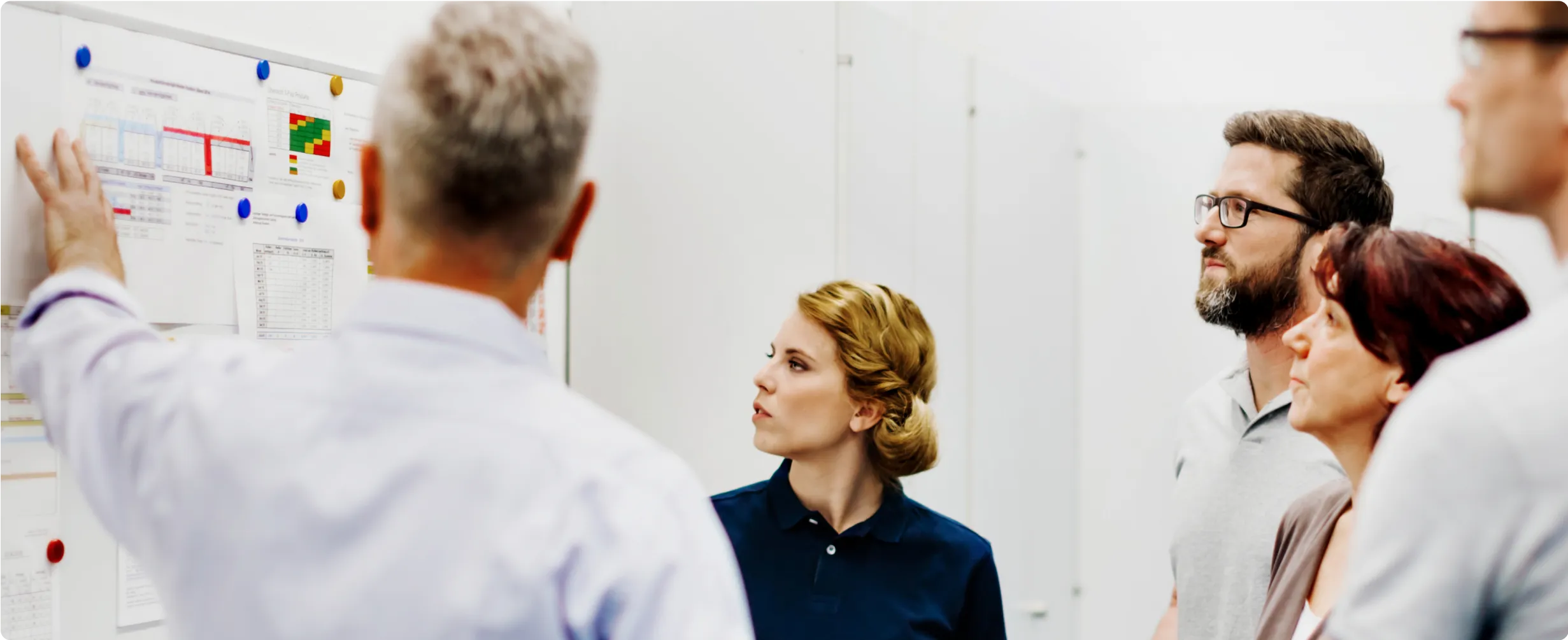
Visual Management became prominent in the early 1990s thanks to Lean Management which stems from Toyota’s Production System. Practiced in a large room called an Obeya or oObeya, Visual Management offers each team both a place and a way to share and review plans, ideas, problems, operations and key objectives on a regular and frequent basis.
The Obeya is built by the team and for the team, a single place with whiteboards on walls enriched by hand-written sticky notes, stickers and other paper artifacts, acting as simple visual elements for planning, value stream mapping, kanban, action management, problem solving, dashboarding, team mood and vacation scheduling. This focused communication hub enables rapid participative interactions and decisions, a place for teams to share feedback on business activities, improve efficiency continuously and increase collective intelligence.
The Obeya, also known as a visual collaborative workspace , is just the visible tip of a Visual Management System. Like neurons are connected to form the brain system (the connectome), an Obeya network, corresponding to interconnected team workspaces across different levels of the organization, is integrated and synchronized to form a real Visual Management System.
A Visual Management System visually connects all layers of an organization, encapsulating teams, managers, and executives in a single, powerful, versatile and sustainable human engine adapted to our VUCA world.
The pillars of any Management System for an organization are based on strong human culture, with the goal of continuously improving business performance and agility, and strengthening its resilience.
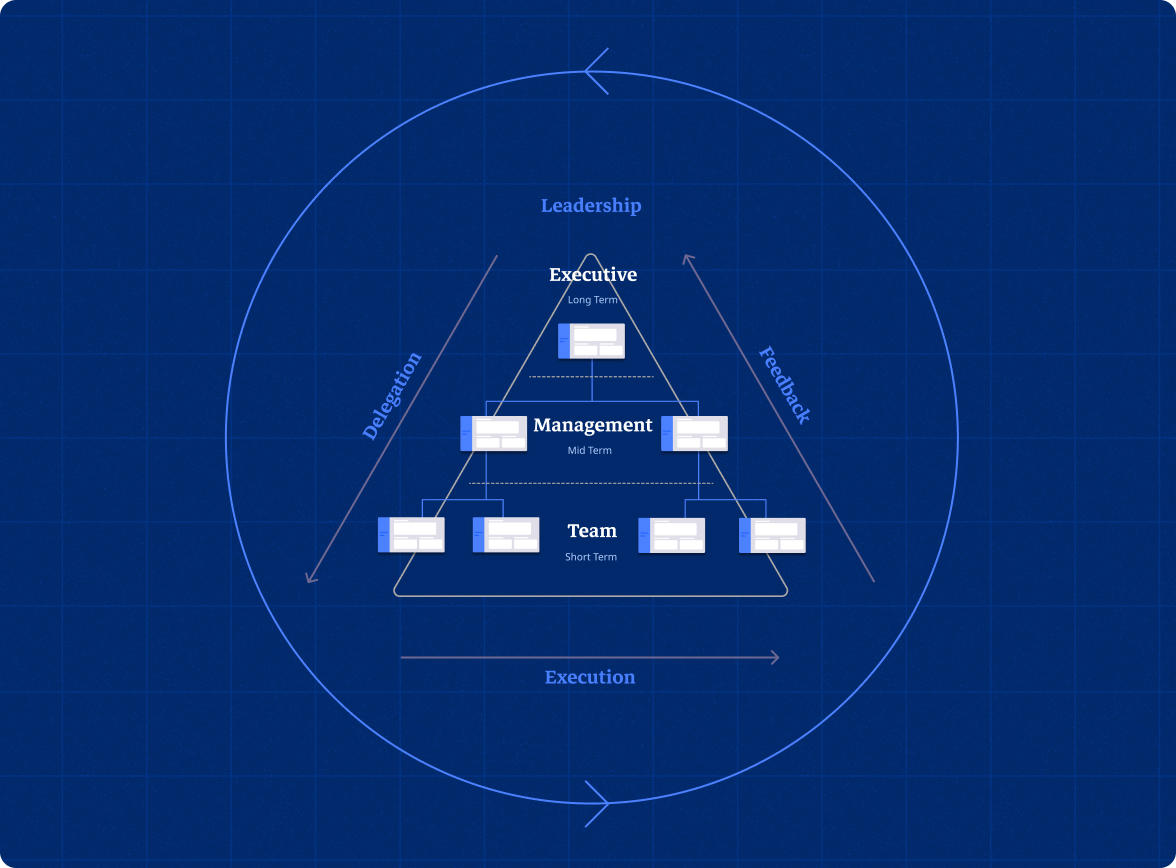
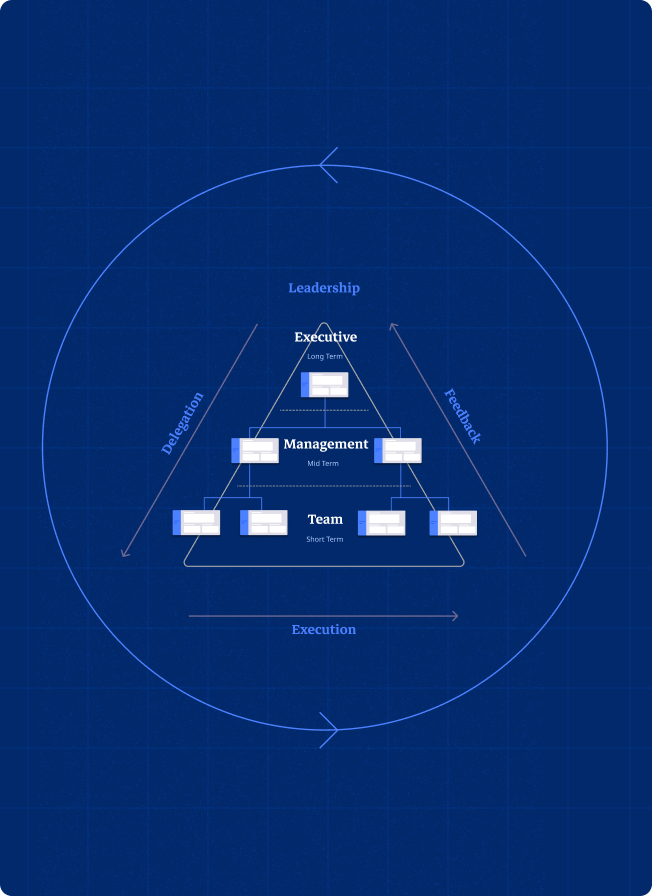
A Visual Management System is built on 2 principle dynamics.
This information is shared with the next level of management, during regular meetings (often daily in manufacturing or weekly in product development), with the Visual Management System consolidating project status, escalated issues and KPIs from the levels below and cross-functionally, providing overall visibility at a macro level to upper management.
The Visual Management System “runs” by repeatedly performing this routine of follow-up and continuous improvement at different levels of the organization during regular and structured meetings. These meetings are often called “rituals” in Lean and “ceremonies” in Agile.
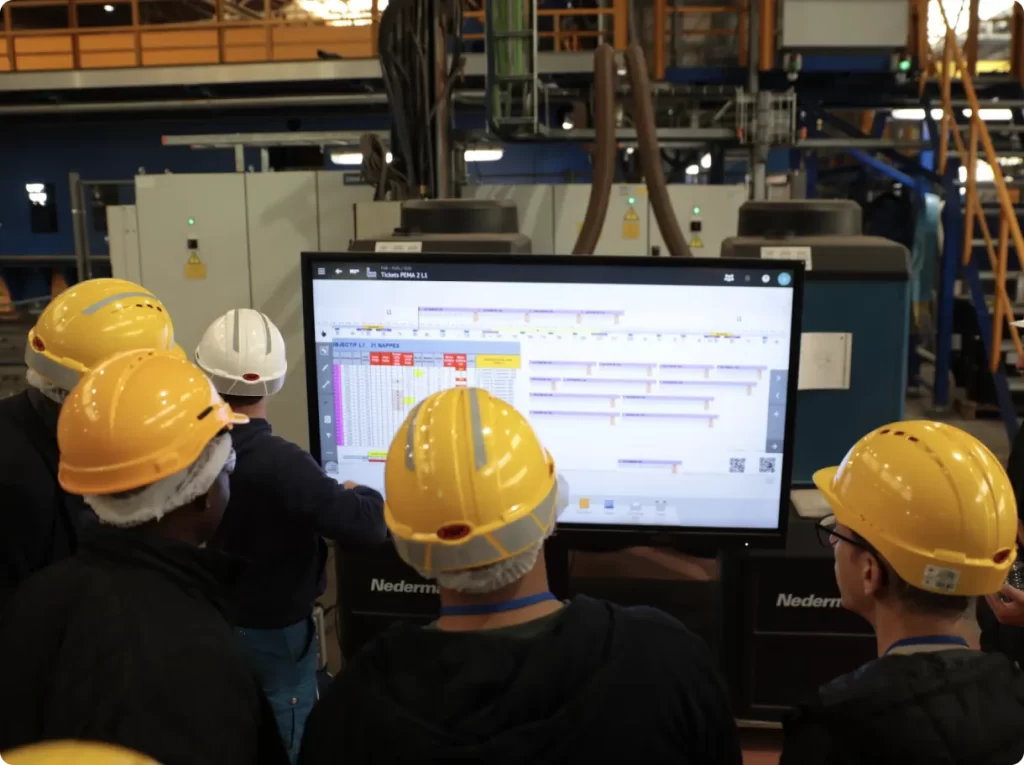
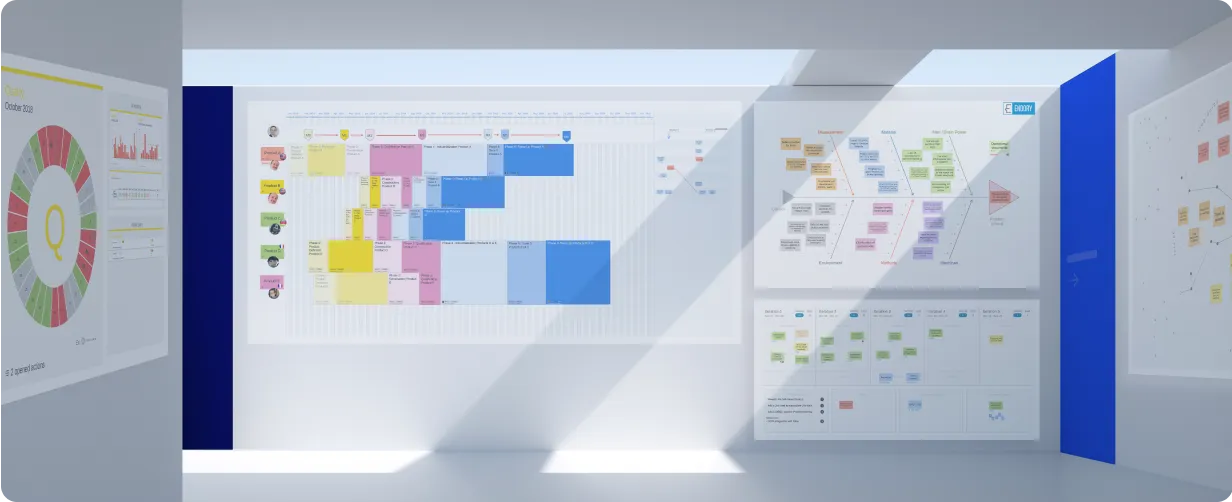
Digitizing Obeyas and the different collaborative flows embedded in a Visual Management System, such as cascading and escalation of information, optimizes the regular meetings of distributed teams non-disruptively, facilitating the deployment of standards and accelerating the continuous improvement cycle.
On a strategic level, a Digital Visual Management System is a catalyst for cultural change and a key enabler for boosting Industry 4.0, Agile at Scale or Lean Enterprise transformation.
Paradoxically, digitization – rejected for years for denaturing Lean and Agile practices – has become a “must have” for the future of Visual Management in our new hybrid world. Some practitioners and pioneers have paved the way. Now the question for any large and complex organization is rather when they will adopt a Digital Visual Management System for their Lean or Agile journey, and which solution will enable them to digitize their system while safeguarding human culture?

© iObeya 2014-2025 All rights Reserved
Your guide to Manufacturing, Operational Excellence, Continuous Improvement
& much more.
Sign up now for our must-attend annual event... with exclusive new features in store!